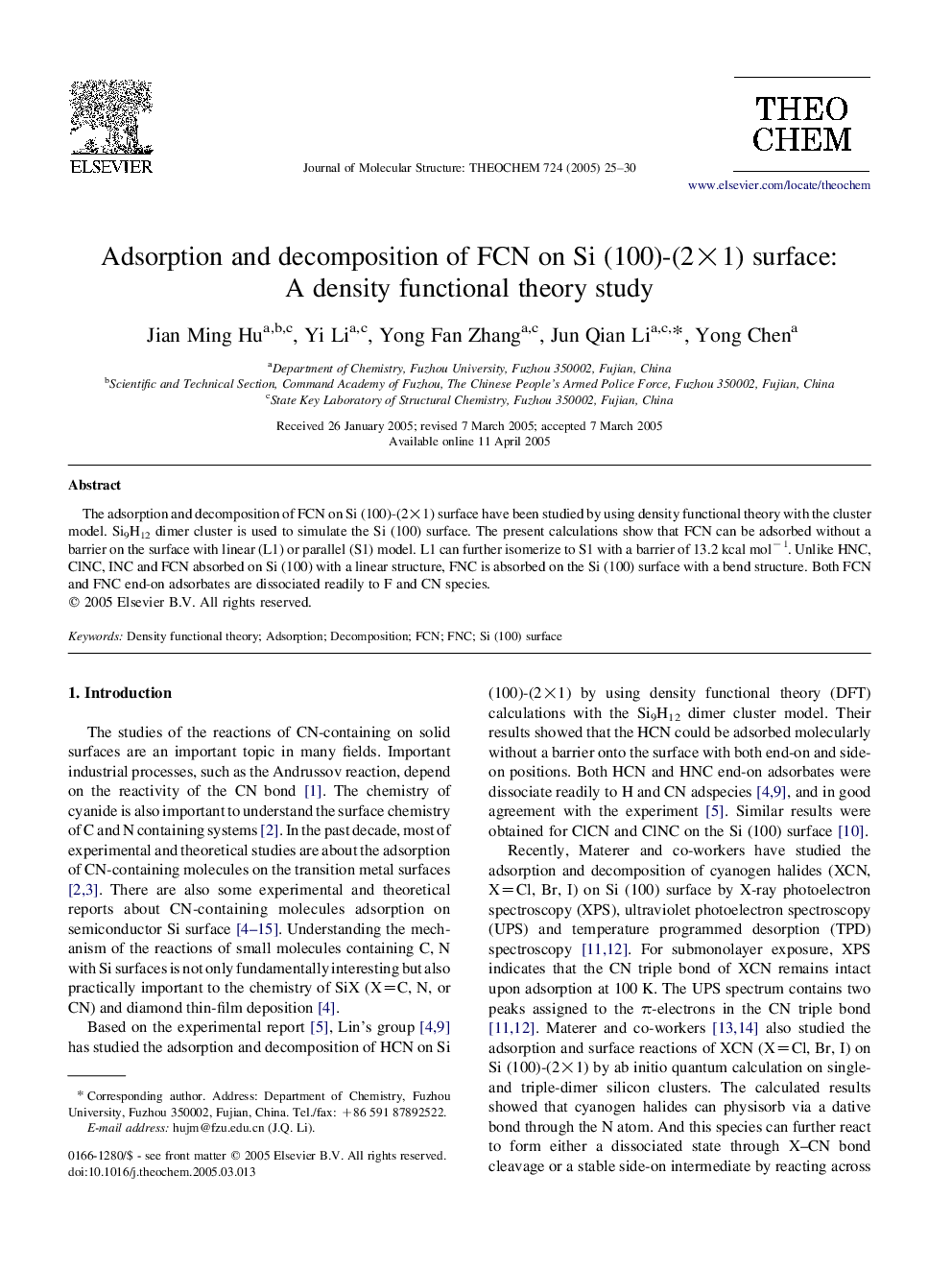| Article ID | Journal | Published Year | Pages | File Type |
|---|---|---|---|---|
| 9590782 | Journal of Molecular Structure: THEOCHEM | 2005 | 6 Pages |
Abstract
The adsorption and decomposition of FCN on Si (100)-(2Ã1) surface have been studied by using density functional theory with the cluster model. Si9H12 dimer cluster is used to simulate the Si (100) surface. The present calculations show that FCN can be adsorbed without a barrier on the surface with linear (L1) or parallel (S1) model. L1 can further isomerize to S1 with a barrier of 13.2 kcal molâ1. Unlike HNC, ClNC, INC and FCN absorbed on Si (100) with a linear structure, FNC is absorbed on the Si (100) surface with a bend structure. Both FCN and FNC end-on adsorbates are dissociated readily to F and CN species.
Related Topics
Physical Sciences and Engineering
Chemistry
Physical and Theoretical Chemistry
Authors
Jian Ming Hu, Yi Li, Yong Fan Zhang, Jun Qian Li, Yong Chen,
